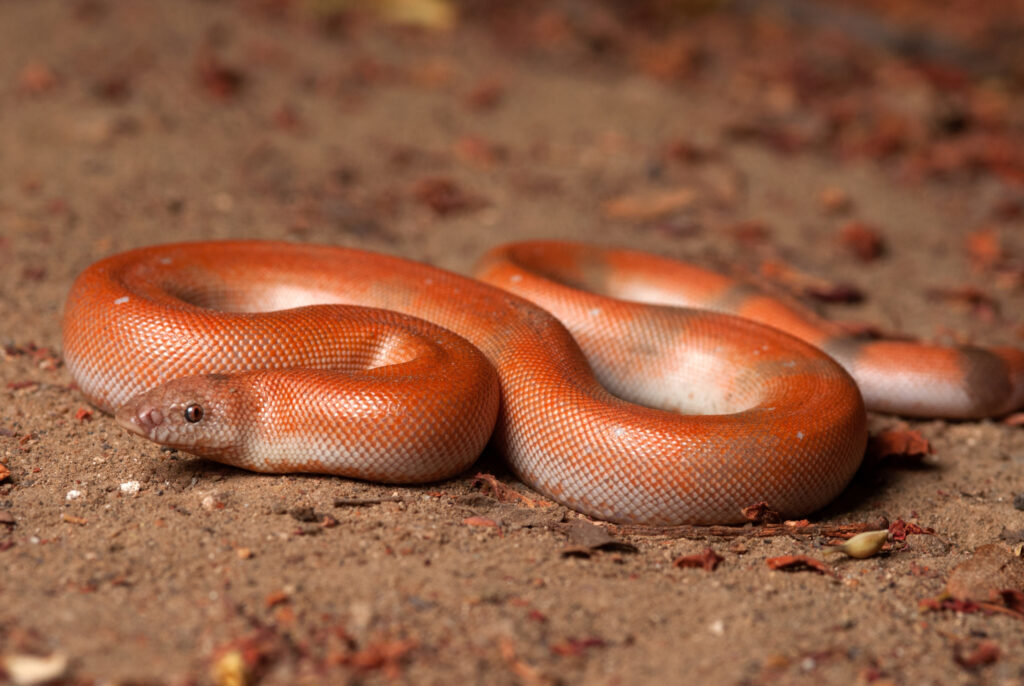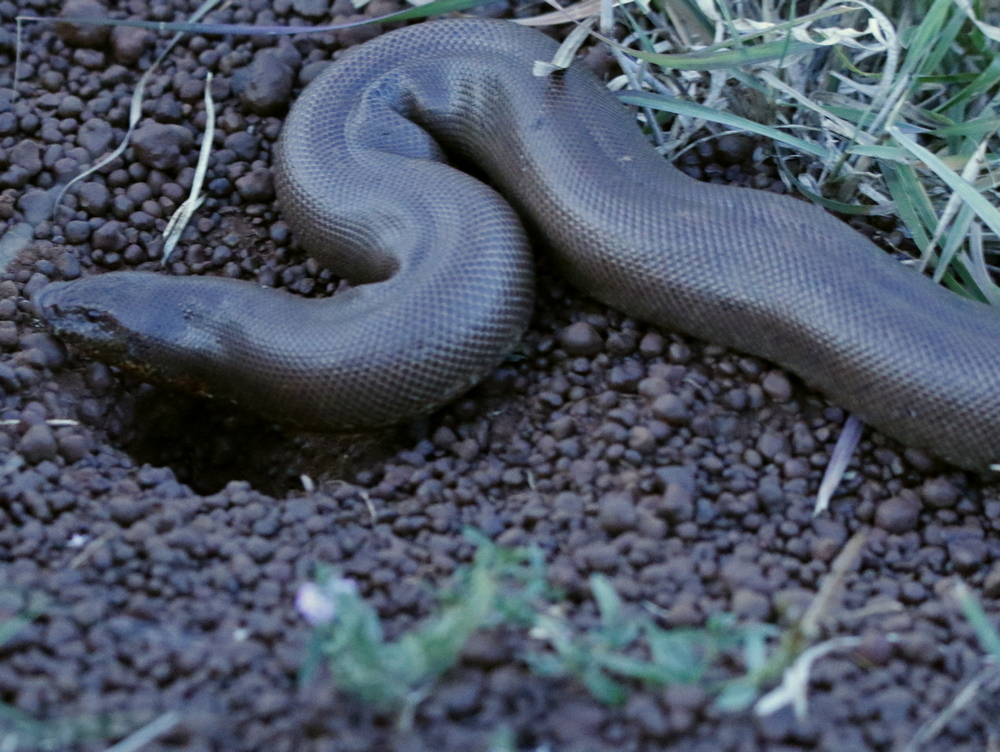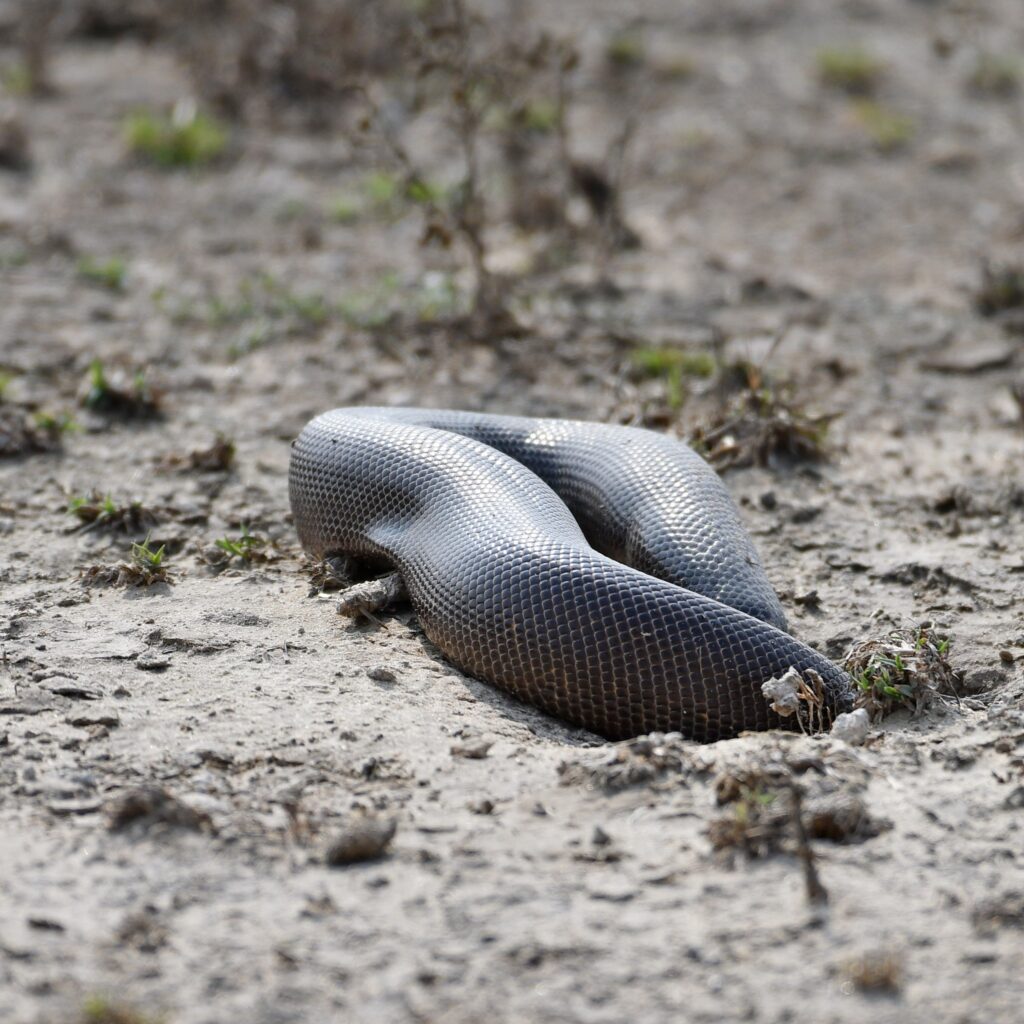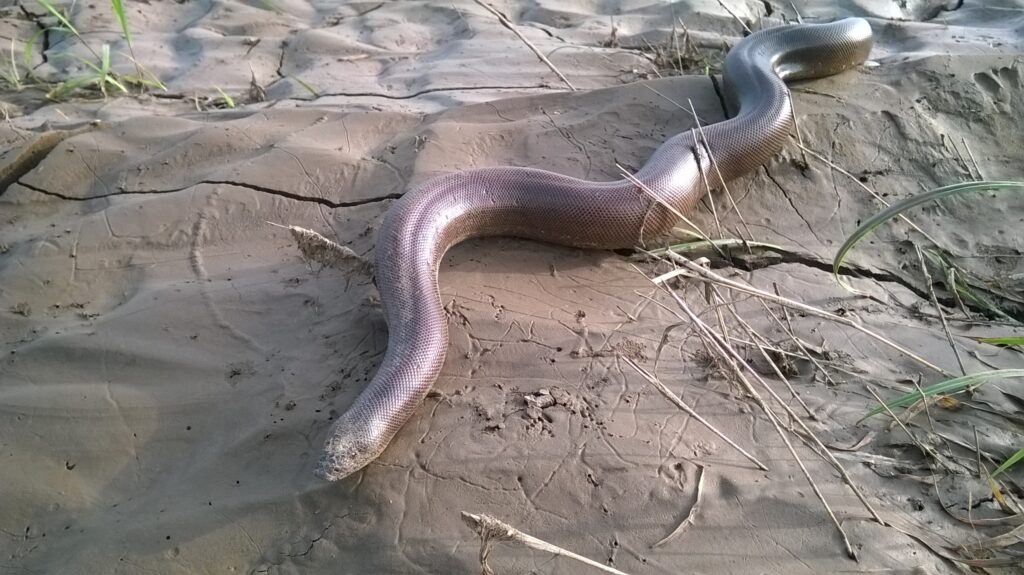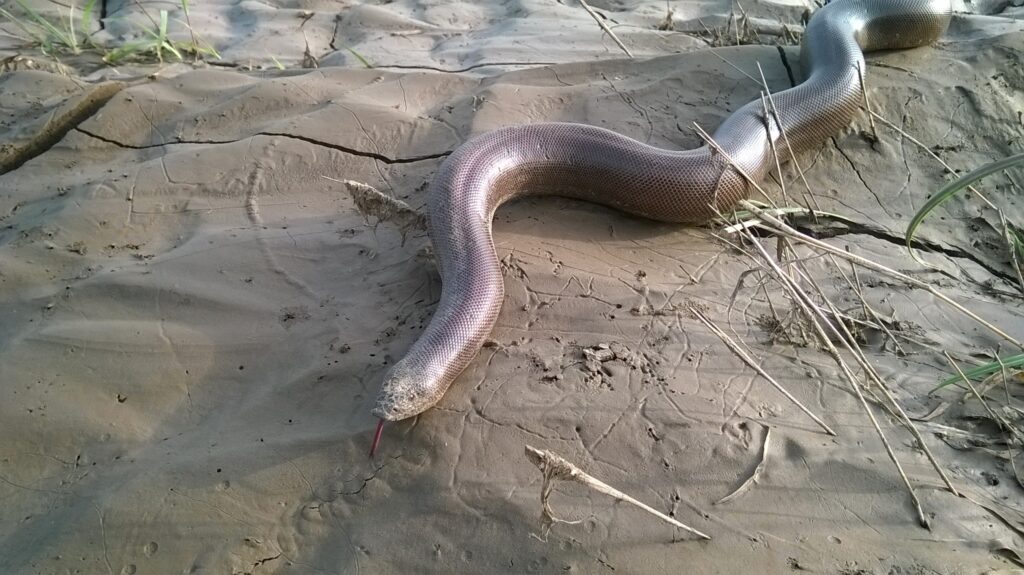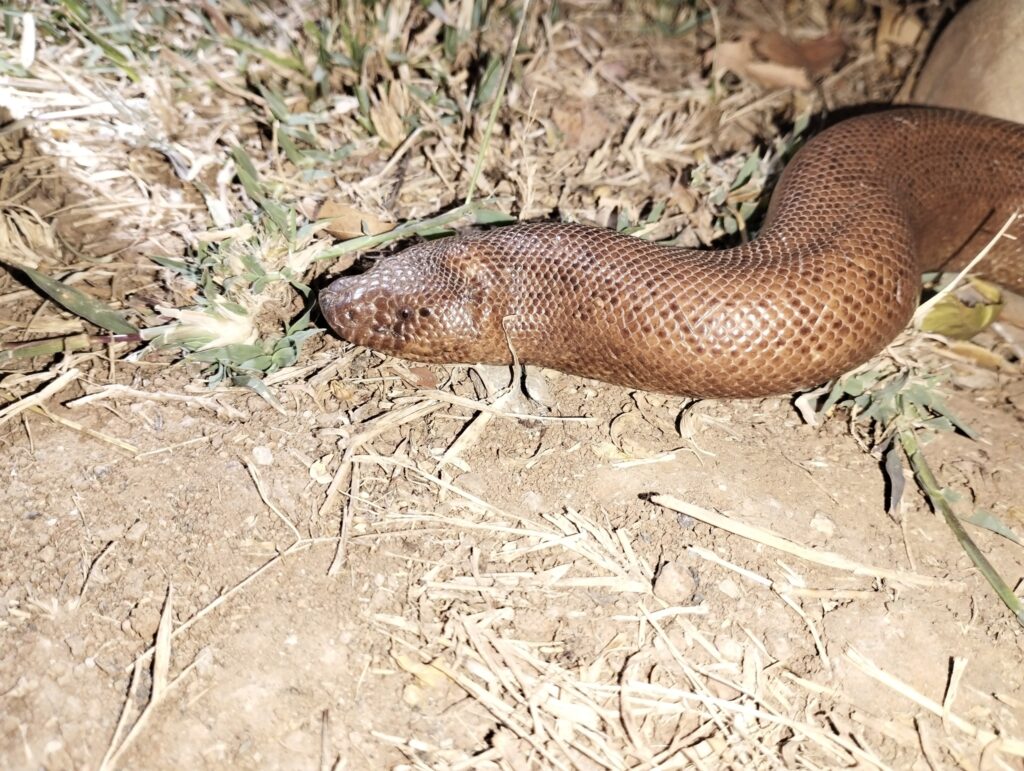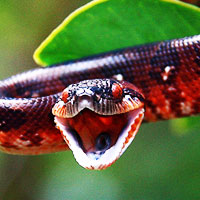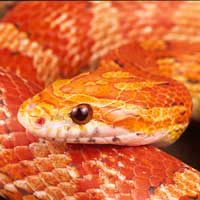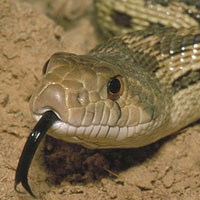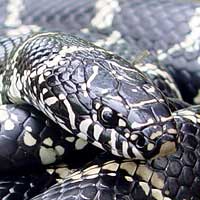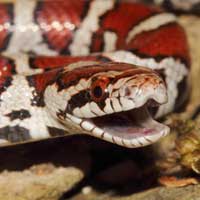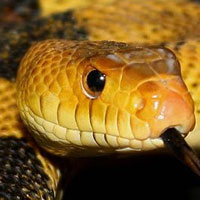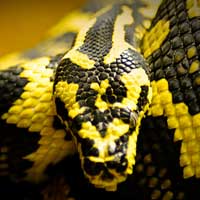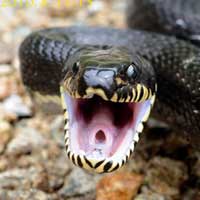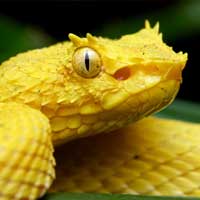The Mysterious World of the Red Sand Boa: A Complete Guide for Snake Enthusiasts
The Red Sand Boa is a stout, burrowing snake native to South Asia, known for its reddish-brown coloration. Scientifically classified as Eryx johnii and belonging to the Boidae family, this species has gained cultural significance and is often misunderstood due to myths surrounding its appearance. Nonvenomous and fossorial by nature, the Red Sand Boa plays a vital ecological role by helping control rodent populations in its native habitats.
Scientific Name: Eryx johnii
Snake Family: Boidae

Understanding the Red Sand Boa: A Secretive Sand Dweller
The Red Sand Boa is a fascinating, burrowing snake that thrives in arid and semi-arid environments. Known for its thick, cylindrical body, blunt tail, and striking reddish-brown color, this species is often mistaken for a two-headed snake—a misconception that has fueled myths and increased its demand in illegal trade. Scientifically named Eryx johnii and part of the Boidae family, the Red Sand Boa is nonvenomous and relatively docile, making it a curious subject for both researchers and reptile hobbyists.
Other Common Names for the Red Sand Boa
- Indian Sand Boa
- Two-headed Snake (mythical nickname)
- John’s Sand Boa
- Double-Ended Snake
Where Does the Red Sand Boa Live? Exploring Its Natural Habitat
The Red Sand Boa is predominantly found in South Asia, particularly in India, Pakistan, and parts of Iran. These snakes prefer dry, sandy, and loose soil environments that support their fossorial lifestyle. You’re most likely to encounter them in scrublands, dry deciduous forests, agricultural fields, and semi-desert regions.
They are nocturnal and secretive, spending much of their time hidden beneath the surface to escape the heat of the day and potential predators. Their body structure is perfectly adapted to digging—broad and muscular with smooth, tightly overlapping scales that help them glide through the substrate.
Interestingly, Red Sand Boas have also shown adaptability to human-altered environments. They are sometimes found near village outskirts or farmlands where rodent populations are high, giving them easy access to food. However, this has also exposed them to risks such as habitat loss and poaching.
| Region | Habitat Type | Altitude Range |
|---|---|---|
| India | Dry scrubland, agricultural fields | Up to 1000 meters |
| Pakistan | Desert edges, rocky terrain | Sea level to 800 meters |
| Iran | Semi-arid regions | Varies by locale |
What Does the Red Sand Boa Eat? Diet and Feeding Behavior Explained
Red Sand Boas are constrictors and feed primarily on small mammals, particularly rodents. Their diet also includes birds, lizards, and sometimes other snakes. Due to their fossorial lifestyle, these snakes are ambush predators. They lie in wait within their burrows, quickly emerging to grasp and constrict their prey before swallowing it whole.
They are most active at night, which aligns with the activity patterns of their prey. The boa’s slow metabolism allows it to go without food for extended periods, a common adaptation in desert-dwelling species.
In captivity, Red Sand Boas can thrive on a diet of appropriately sized frozen-thawed rodents such as pinkie or fuzzy mice. It’s essential to avoid overfeeding and to monitor the snake’s weight, as obesity can become an issue.
- Primary wild diet: Mice, rats, and small birds
- Captive diet: Frozen-thawed rodents
- Feeding frequency: Every 10–14 days for adults
- Hunting style: Ambush constrictor
Temperament of the Red Sand Boa: Shy but Steady
The Red Sand Boa is known for its calm, docile demeanor, especially in captivity. While it may be shy and defensive when first encountered in the wild, these snakes rarely bite and instead choose to burrow or coil into a ball when threatened. Their bluff defense—raising the tail to mimic a head—is one of the reasons behind their “two-headed” nickname.
This species does not climb and shows little interest in exploring above ground, which aligns with their secretive, fossorial nature. They're not fast-moving and can be handled safely with minimal stress when accustomed to human contact. However, rough handling or sudden movements may trigger defensive behavior, so it’s essential to handle them with care.
Though not social animals, Red Sand Boas are relatively tolerant of routine human interaction. With proper acclimation, they can make excellent display or educational reptiles due to their unique look and calm presence.
- Disposition: Docile, shy
- Defense mechanism: Mimics a second head with tail
- Activity cycle: Nocturnal
- Handling tolerance: High (with proper care)
Red Sand Boa Health and Lifespan: What to Expect
With proper care, Red Sand Boas can live 15 to 20 years in captivity. In the wild, their lifespan may be shorter due to predation, human interference, and environmental factors. Like all snakes, they are susceptible to various health concerns that should be proactively monitored.
Common health issues include respiratory infections, mouth rot, and scale rot—often stemming from improper humidity or substrate conditions. Because these boas are burrowers, dirty or overly damp bedding can lead to fungal infections. Obesity is also a concern if feeding isn’t appropriately managed.
Parasites, both internal and external, can be acquired from wild-caught specimens. Therefore, sourcing captive-bred individuals and maintaining clean enclosures with routine vet check-ups is highly recommended.
| Health Concern | Cause | Prevention |
|---|---|---|
| Respiratory Infection | Improper temperature/humidity | Stable enclosure environment |
| Scale Rot | Damp substrate | Dry, clean enclosure |
| Parasites | Wild-caught origin | Buy captive-bred, quarantine new arrivals |
Breeding and Reproduction in the Red Sand Boa
Red Sand Boas are ovoviviparous, meaning they give birth to live young rather than laying eggs. Breeding typically occurs during the warmer months, with the gestation period lasting around 4 to 5 months. Females may give birth to anywhere from 4 to 12 neonates, depending on age and health.
Mating behavior in this species is often triggered by environmental cues such as seasonal temperature and humidity changes. Males may engage in combat or ritualized behavior when competing for a female, although this is more common in wild populations.
Captive breeding is achievable with proper environmental conditioning. Providing a cooling period to simulate seasonal change, followed by gradual warming, often encourages mating. It’s important to ensure the female is healthy and of adequate size before attempting breeding, as the energy demand is significant.
- Reproduction: Ovoviviparous (live birth)
- Gestation: 120–150 days
- Litter size: 4–12 neonates
- Breeding frequency: Annually, if conditions allow
Caring for a Red Sand Boa: Husbandry and Habitat Needs
Red Sand Boas are relatively easy to care for, making them a solid choice for intermediate snake keepers. A standard 20-gallon long terrarium is suitable for an adult, with a substrate such as aspen or coconut husk that supports burrowing. Avoid cedar or pine shavings, which can be toxic.
Temperatures should range between 82–88°F on the warm side with a cooler end around 75°F. A belly heat pad regulated by a thermostat is ideal for maintaining proper digestion temperatures. Humidity should remain low to moderate, around 40–50%, with a shallow water bowl available at all times.
Provide at least two secure hiding spots and regularly spot-clean the enclosure to maintain hygiene. Enrichment like fake plants and small logs can also help simulate a natural environment, though minimalism is preferred due to their reclusive behavior.
- Enclosure size: 20-gallon long minimum
- Substrate: Aspen, coconut husk, paper towel
- Temperature gradient: 75–88°F
- Humidity: 40–50%
- Lighting: Not required, but a day/night cycle is beneficial
Other Snakes In This Species
 Argentine Boa
Argentine Boa Calabar Burrowing Boa
Calabar Burrowing Boa Colombian Rainbow Boa
Colombian Rainbow Boa Common Boa
Common Boa Cooks Tree Boa
Cooks Tree Boa Cuban Boa
Cuban Boa Desert Rosy Boa
Desert Rosy Boa Desert Sand Boa
Desert Sand Boa Dumeril Boa
Dumeril Boa Egyptian Sand Boa
Egyptian Sand Boa Emerald Tree Boa
Emerald Tree Boa Haitian Boa
Haitian Boa Hog Island Boa
Hog Island Boa Madagascar Ground Boa
Madagascar Ground Boa Madagascar Tree Boa
Madagascar Tree Boa Pacific Boa
Pacific Boa Red Sand Boa
Red Sand Boa Rough-scaled Sand Boa
Rough-scaled Sand Boa Rubber Boa
Rubber Boa True Red Tail Boa
True Red Tail Boa Western Rainbow Boa
Western Rainbow Boa
